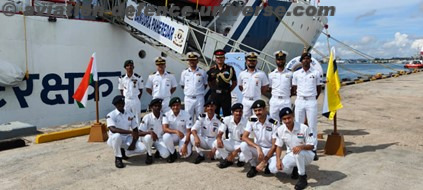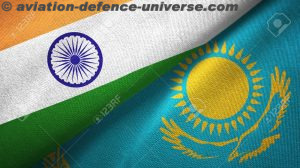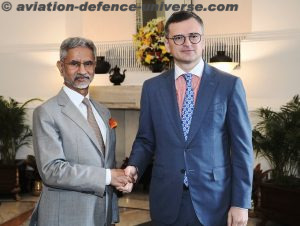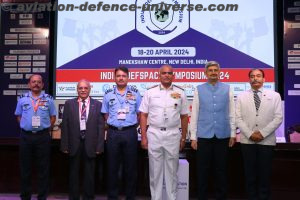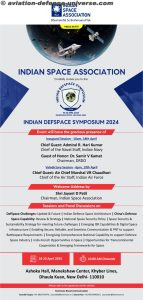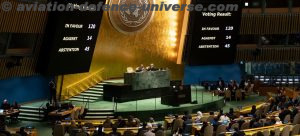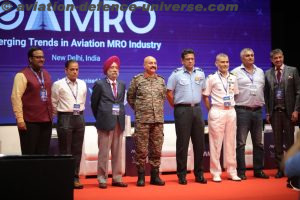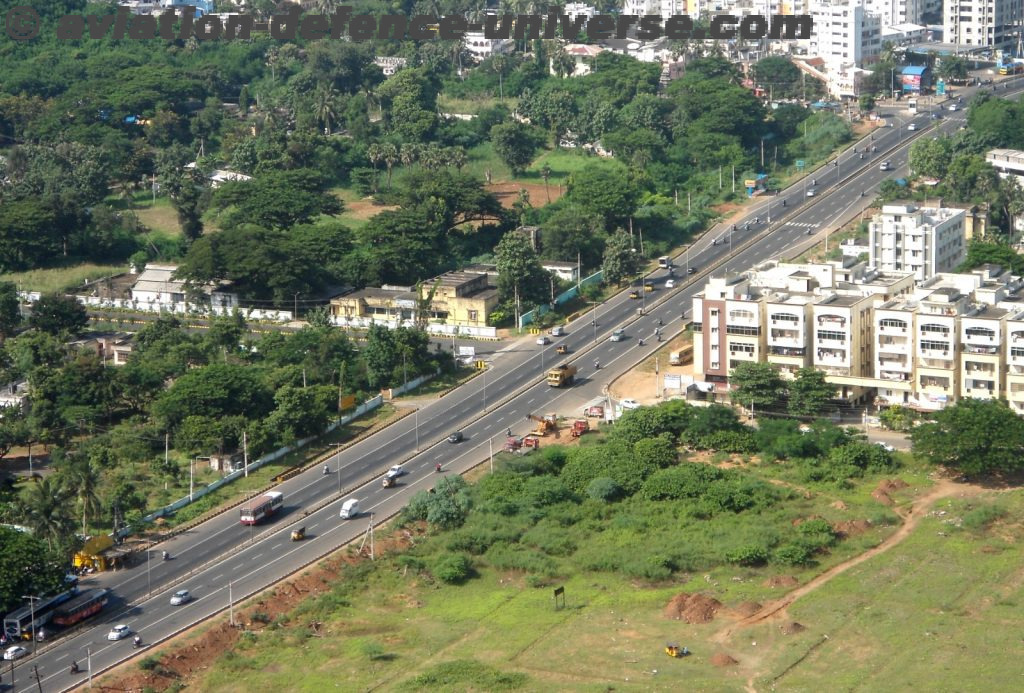New Delhi. 31 December, 2015. It was the year of Africa for India’s diplomacy as New Delhi hosted the third India-Africa Forum Summit (October 26-29) by inviting all 54 countries. The summit, which was attended by 41 heads of state/government and representatives of other countries marked the biggest ever gathering of African leaders and unveiled a “dynamic and transformative agenda” of mutual resurgence by dovetailing the India growth story with Africa’s vision of its own resurgence, as reflected in Agenda 2063. The IAFS-III also saw Prime Minister Modi engaging in bilateral meetings with all leaders of African countries who had come for the summit. The summit was preceded by important initiatives focused on building up a knowledge bridge and bolstering people-to-people contact, which was reflected by the Editor’s Forum and Academics’ Forum.
Development cooperation in Africa is set to scale new heights as India announced Lines of Credit worth USD 10 billion in concessional credit to Africa, apart from an additional grant assistance of USD 600 million, which included an India-Africa Development Fund of $100 million and an India-Africa Health Fund of $10 million. Significantly, the total financial pledge for projects to be executed over the next 5 years (till 2020) is more than double of the LOCs and grants committed by India over the last two summits. The $100 million development fund will be used for setting up training institutes and other showpiece projects of India-Africa development cooperation which will be finalized in the plan of action to be launched with the AU next year. With a view to harnessing the youth power of the continent, India more than doubled scholarships for Africans to 50,000 over the next five years. India also decided to expand the Pan Africa E-Network, a defining digital connectivity project that currently encompasses 48 African countries for tele-medicine and tele-education.
The IAFS-III mapped out a blueprint for joint development of the blue economy and forged a comprehensive framework for proactive collaboration on a range of cross-cutting issues, including terrorism, piracy, cyber security, climate change, sustainable development, WTO negotiations and UNSC reform. Looking ahead, the summit underlined the convergence of India and Africa on fast-tracking the expansion of the UNSC, with both sides supporting permanent seats for India and Africa in a reformed UNSC. We also agreed to set up a joint monitoring mechanism to track implementation of agreed projects to ensure that there is no gap between ideas and action.
The summit was the high moment in India-Africa relations, but it was preceded by important visits by EAM to South Africa and Egypt and incoming visits of the presidents of Tanzania and Mozambique.
The visit of EAM to South Africa (May 18-21) saw the two sides fleshing out a framework of a five year strategic programme of cooperation as they identified priority areas of cooperation: defence, deep-mining, science and technology, agriculture & food processing and insurance. The two sides also decided to launch an India-South Africa Preferential Trade Agreement (PTA). EAM’s visit to Egypt (August 23-25) resulted in the two sides scaling up security and counter-terror cooperation and the signing of pacts on enhancing tourism and scientific and technical cooperation. During the visit of Tanzania President to India (June 17-21), the outcomes included setting up of a Joint Working Group on bolstering counter-terror cooperation, India’s assistance to development of gas sector in Tanzania and the signing of an agreement on hydrography. The visit of President of Mozambique to India (August 4-8) reflected in a miniature key elements of India’s Africa policy, with its focus on trade, training, technology and capacity building.
FIPIC
Taking off from PM’s visit to Fiji to attend the first meeting of the Forum for India-Pacific Islands Cooperation (FIPIC), India hosted the second edition of the summit to reach out to 14 island states which culminated in a host of initiatives in areas of capacity building, developmental cooperation, renewable energy and blue economy. Firming up a template for accelerating this crucial partnership across the spectrum, FIPIC-II saw India offering to set up an information technology laboratory in each Pacific island country that will enable people in the region to get access to tele-medicine and tele-education. In areas of training and capacity building, India increased the slots under the Indian Technical and Economic Cooperation (ITEC) training programme, with Fiji getting 110 slots, and the number of slots for the other 13 countries to be doubled from 119 to 238. Other important initiatives by India included partnering in the development of micro, small and medium enterprises in the region, the setting up of an Institute for Sustainable Coastal and Ocean Research with a network of marine biology research stations and offer of assistance in establishing a‘Space Technology Applications Centre’ in any one of the Pacific island countries for the entire region. The summit with large ocean states, as PM Modi called it, saw substantive discussions on closer cooperation in UN reform and combating climate change.
Central Asia: Higher Trajectory
India’s Connect Central Asia policy moved into high gear in 2015, with the unique journey by PM Modi to all five Central Asian states (July 6-13), including Uzbekistan, Kazakhstan Turkmenistan, Kyrgyzstan and Tajikistan. Together with our participation in the SCO summit in Russia it sent a strong message on the importance of building on India’s civilisational links with this resource-rich, strategically located region. The path to India’s inclusion in the SCO has nearly been completed and the Ufa gathering has imparted greater coherence and traction to our Connect Central Asia policy. The outcomes were reflected in scaling up economic ties, forging energy partnership, deepening security cooperation and focus on cultural diplomacy to qualitatively transform relations with the region. EAM’s trips to Turkmenistan in April and Tajikistan in May set the stage for PM Modi’s transformational visit to the region in July.
India and Uzbekistan signed three pacts in areas of tourism, culture and cooperation between foreign offices of the two countries. The decision to fast-track implementation of the contract for the supply of 2,000 metric tonnes uranium to India, enhancing counter-terror cooperation and consultations on shaping a stable and inclusive Afghanistan were among key themes of PM Modi’s discussions in Uzbekistan. In Kazakhstan, PM Modi witnessed the drilling of the first oil well in the Satpayev block, in which ONGC has 25 per cent stake. The two countries also signed a pact for renewal of long term supply of natural uranium to India and agreed to explore the transportation of oil and gas through pipeline or LNG from Kazakhstan to India. The “Tej Kadam,” joint statement outlines the template for developing India-Kazakhstan relations as the two sides signed five agreements, including a pact on enhancing defence and military-technical cooperation.
Another major development, which is going to shape the energy landscape of the region, is the decision to operationalise the Turkmenistan-Afghanistan-Pakistan-India (TAPI) gas pipeline, the groundbreaking ceremony of which was witnessed by the Vice President during his visit in December. India and Turkmenistan firmed up a template for long-term energy partnership, with ONGC Videsh Ltd opening its office in Turkmenistan and the two countries signing a MoU between the State Concern “Turkmenhimiya” and Indian PSU Rashtriya Chemicals and Fertilizers Limited, to provide a framework for long-term sourcing of urea from Turkmenistan. The signing of the Defence Cooperation Agreement is expected to boost counter-terror cooperation. With Kyrgyzstan also, the key takeaway was the signing of the defence cooperation agreement, which envisages intensifying joint military exercises, exchange of military instructors and observers, military education and training. During PM Modi’s visit to Tajikistan, India’s core strengths in training and capacity building were lauded as India offered to set up computer labs in 37 schools in Tajikistan. The two sides also firmed up a 7-step framework for enhancing cooperation in agriculture.
Latin America and Caribbean: Revitalising Ties
A series of two-way visits and initiatives for the Latin America and Caribbean (LAC) region built upon PM Modi’s visit to Brazil last year. Guyana’s President Donald R. Ramotar, was chief guest at Pravasi Bhartiya Divas held in Gandhinagar in Gujarat (January 7 -12) where he was conferred the Pravasi Bharatiya Samman Award. Enhancing development cooperation, India announced concessional credit of $10 million and grant assistance of $8 million. Suriname’s Foreign Minister visited India (January 11-16), and the visit saw the two sides discussing initiatives to upscale economic and developmental cooperation.
Minister of State for External Affairs, Gen. V.K Singh attended the India-SICA Ministerial Meeting in Guatamela (May 28-29). In a major initiative, India offered a Line of Credit of US $240 million to SICA countries (US $30 million to each SICA country), in addition to enhancing ITEC slots.
During Uruguay’s Foreign Affairs Minister’s India visit (October 6-11) the two sides decided to give a fresh impetus to the Preferential Trade Agreement between India and MERCOSUR to boost trade and services. India plans set up a Centre for Excellence and Information Technologies in Uruguay.
Brazil’s Foreign Minister’s visit (November 17-20) also gave fresh impetus to the important relationship. FM-EAM talks bolstered strategic coordination between the two countries on a host of issues, including UNSC reform, terrorism and cyber security. Free Trade Agreement (FTA) between MERCOSUL and India, and talks on resuming the trilateral talks amongst MERCOSUL, India and SACU were explored. This agreement could visibly transform India’s economic relations with not just Brazil but the entire region. Discussions on initiating civil nuclear cooperation were also significant.
PM Modi met with the Presidents of Mexico and St. Lucia on the sidelines of the UNGA in September. Based on discussions, India and Mexico (an influential player in CELAC), can be expected to expand their economic and energy partnership. Discussions on UNSC reform and India’s membership in global export regimes, including NSG, were significant. St. Lucia thanked PM for giving importance to small countries and their voices.









